- Author: Cathy
Introduction
Color laser engraving has revolutionized the customization industry by enabling vibrant and detailed designs on a wide variety of materials. Using advanced methods like oxidation and artificial coloring agents, color laser engraving combines precision with creativity, offering opportunities to create striking logos, personalized gifts, industrial markings, and artistic designs.
Whether you’re a business professional, a hobbyist, or an artist, understanding how to maximize the potential of laser engraving with color can open up endless possibilities.
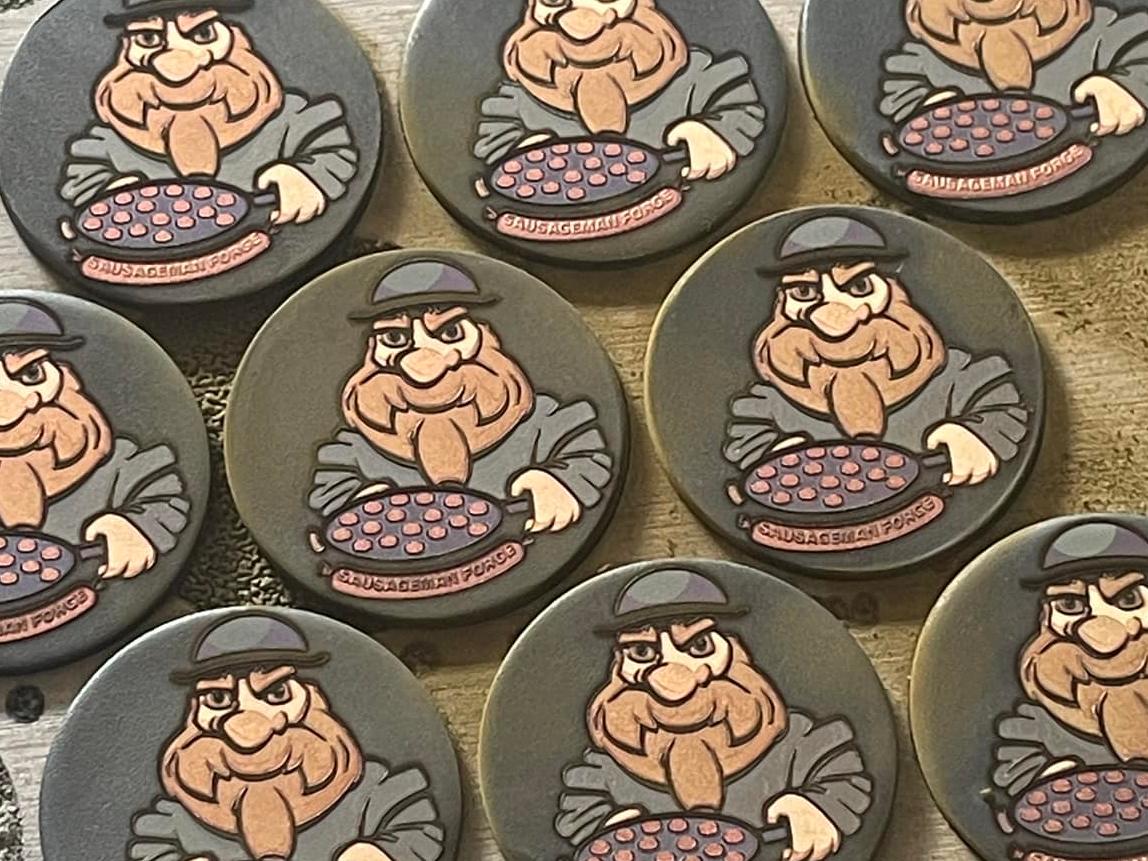
1. How Does Color Laser Engraving Work?
Color laser engraving usually works by using a focused laser beam to interact with the surface of a material, causing various reactions that result in vivid, detailed designs. Generally speaking, color laser engraving refers to color engraving on metal.
For metals, the heat of high power fiber laser may cause an oxidation reaction, creating a colored oxide layer that reflects light in different ways to produce a spectrum of colors. The thickness of this oxide layer determines which wavelengths of light are reflected back to our eyes, resulting in different perceived colors. When the laser is directed at the material, it heats the surface to specific temperatures, triggering chemical or physical changes.
The process works similarly to how soap bubbles display rainbow colors. Just as soap film thickness determines which colors we see, the thickness of the oxide layer on the metal surface controls which wavelengths of light are reflected. This phenomenon, known as thin-film interference, is what creates the spectrum of colors achievable through laser marking.
For acrylic and other materials, the laser cannot engrave color directly. It either exposes underlying layers of color, as seen in double-color acrylic, or removes colored coatings to reveal contrast. You may achieve them on non-metallic materials with CO2 lasers and UV lasers.
2. Color Laser Engraving on Different Materials
Laser color engraving takes different forms depending on the laserable materials. Most metals like stainless steel and titanium undergo an oxidation reaction to produce vibrant colors, while materials such as acrylic and plastic achieve color effects through layered engraving or artificial coloring methods.
2.1. Color Engraving on Metals
Color engraving on metals is a sophisticated marking process that creates permanent, vibrant designs directly on metal surfaces through controlled heat application.
Compared to other laser types, fiber lasers excel in delivering the focused energy required for processes like oxidation, which is key to achieving vibrant and consistent colors on metals. Unlike engraving methods that rely on color filling, this technique actually changes the metal’s surface properties to produce different colors, resulting in a durable finish that becomes part of the material itself.
By precisely controlling the laser’s power, speed, and frequency, you can achieve a spectrum of colors ranging from subtle gold and bronze hues to vivid blues and purples, particularly on stainless steel and titanium.
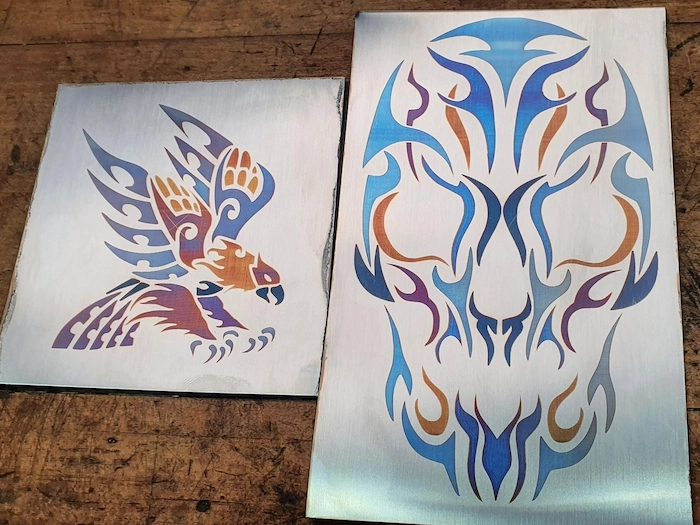
2.2. Color Engraving on Acrylic
Engraving on acrylic typically uses a layered material known as double color acrylic for laser engraving.
The double color acrylic consists of a colored top layer and a contrasting core layer. When the laser removes the top layer, it reveals the contrasting color beneath, creating a bold, two-tone effect.
It is especially popular for signage, nameplates, and decorative panels because of its clean, vibrant finish.
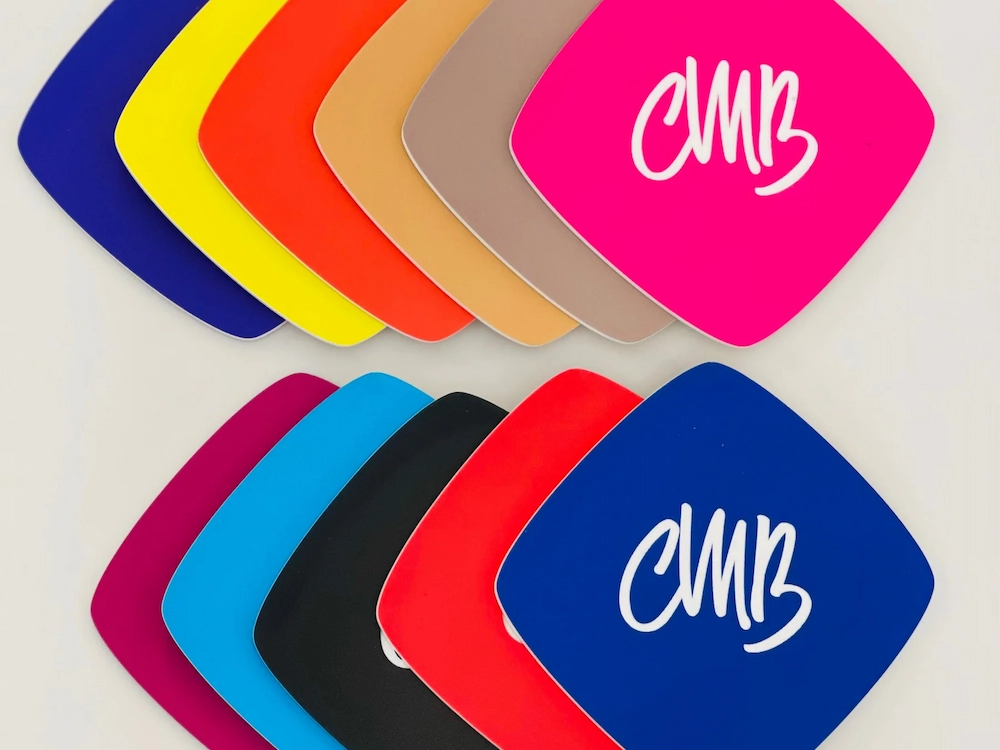
2.3. Color Engraving on Glass
Engraving glass with color is a delicate process that often involves applying a colored coating to the surface with acrylic paints and so on.
The laser etches into the coating, exposing the base material or creating patterns in the colored layer. UV lasers are preferred for this task due to their precision and ability to maintain the integrity of the glass.
This method is popular for creating decorative items, such as colored glass bottles or custom trophies.
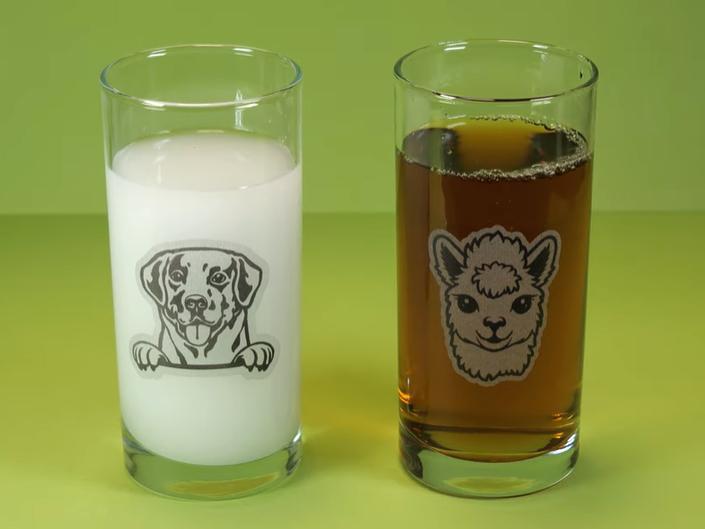
3. How to Color Laser Engraving on Metal?
Creating different colors requires a suitable laser marker and precise control over the laser parameters. The power output, pulse frequency, and scanning speed all play crucial roles in determining the final color.
For instance, lower power settings typically produce lighter colors like yellows and golds, while higher power settings create deeper blues and purples. On stainless steel, temperatures around 400°F produce golden hues, while heating to approximately 700°F results in deep blue tones.
Temperature control is absolutely critical in this process. The fiber laser must heat the metal surface to exact temperatures to achieve specific oxide layer thicknesses. Too much heat can result in unwanted colors or even damage the material, while insufficient heat may not produce any color change at all. This is why modern laser marking systems incorporate sophisticated control systems to maintain precise temperature regulation.
Different metals react uniquely to laser coloring. Stainless steel and titanium are particularly well-suited for this technique, as they form stable oxide layers that produce consistent colors. Titanium offers an especially wide range of possible colors, from pale yellows through vibrant purples and blues.
However, color laser engraving settings may vary depending on the material and the laser engraver used. The best way to achieve your desired effects is to test the settings yourself. Alternatively, you can search Facebook Laser Group to see if any users have shared color engraving settings for the same laser model.
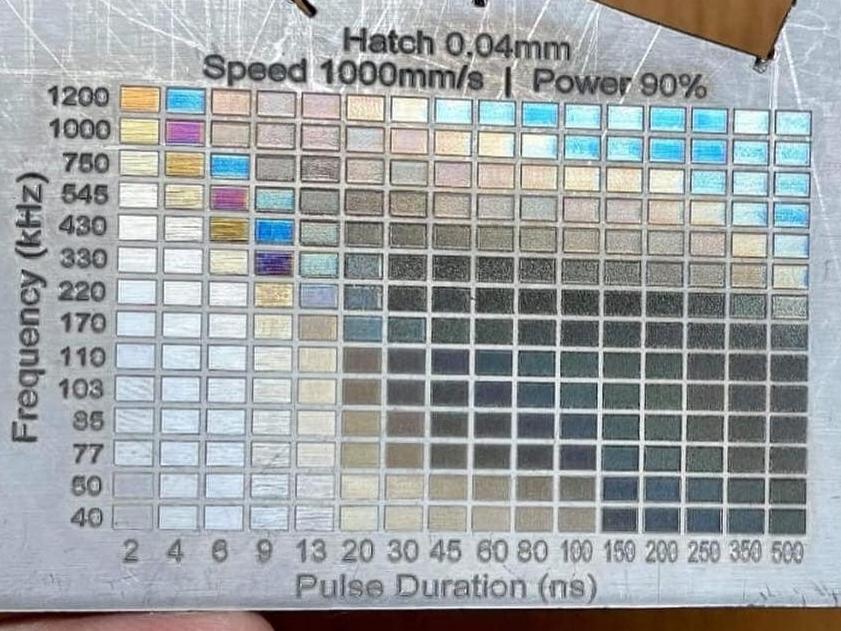
4. How to Color Fill Laser Engraving?
Color filling laser engraving transforms simple engraved designs into vibrant artwork by applying color to the recessed areas, creating striking contrasts against the material’s surface. It’s a popular method for creating colorful designs on most laserable materials, in addition to color engraving on metal.
Once the surface is prepared after cleaning, a suitable coloring material should be selected based on the material being engraved. Acrylic paint is a popular choice for wood and plastic, offering vibrant colors and easy application. For metal engravings, specialized paints or enamel fills work effectively, while epoxy resin can be used to create a glossy and durable finish for a variety of surfaces.
After the color is applied, the surface should be dried and cured, ensuring it adheres properly and remains durable over time. This creates a lasting, professional finish that maintains its vibrancy over time, making color-filled laser engravings ideal for signage, decorative pieces, and custom artwork.
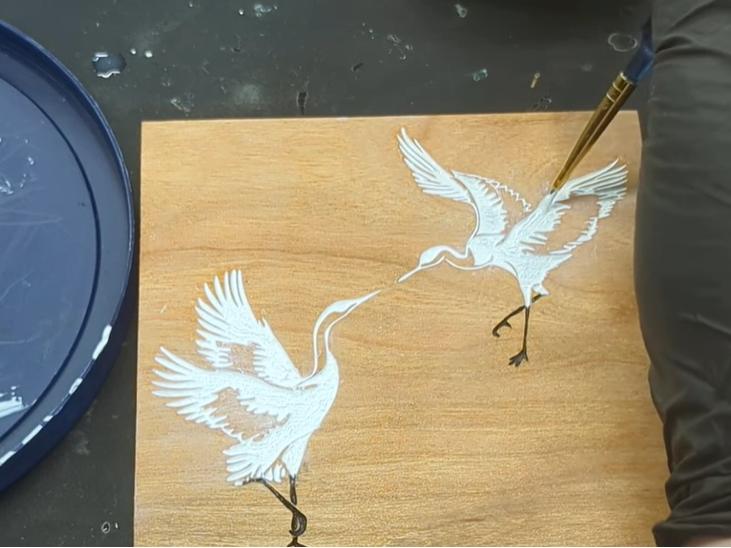
5. Best Laser Machine for Color Engraving
The Aurora Laser Marker is equipped with a powerful fiber laser, making it ideal for color engraving on metals through advanced oxidation techniques. Its precise beam control allows for intricate designs, ensuring sharp, high-resolution results that are both durable and visually striking. Whether you’re working on stainless steel, titanium, or other laser-compatible metals, the Aurora delivers consistent, professional-grade outcomes.
Additionally, the Thunder Laser Aurora’s user-friendly interface makes it an excellent choice for hobbyists, simplifying the engraving process while still offering advanced customization options. Its versatility allows users to create everything from intricate artistic designs to functional industrial markings, making it suitable for a wide array of creative and practical projects.
For anyone seeking the best laser machine for color engraving, the Thunder Laser Aurora Laser Marker combines innovation, performance, and ease of use to bring your creative visions to life.
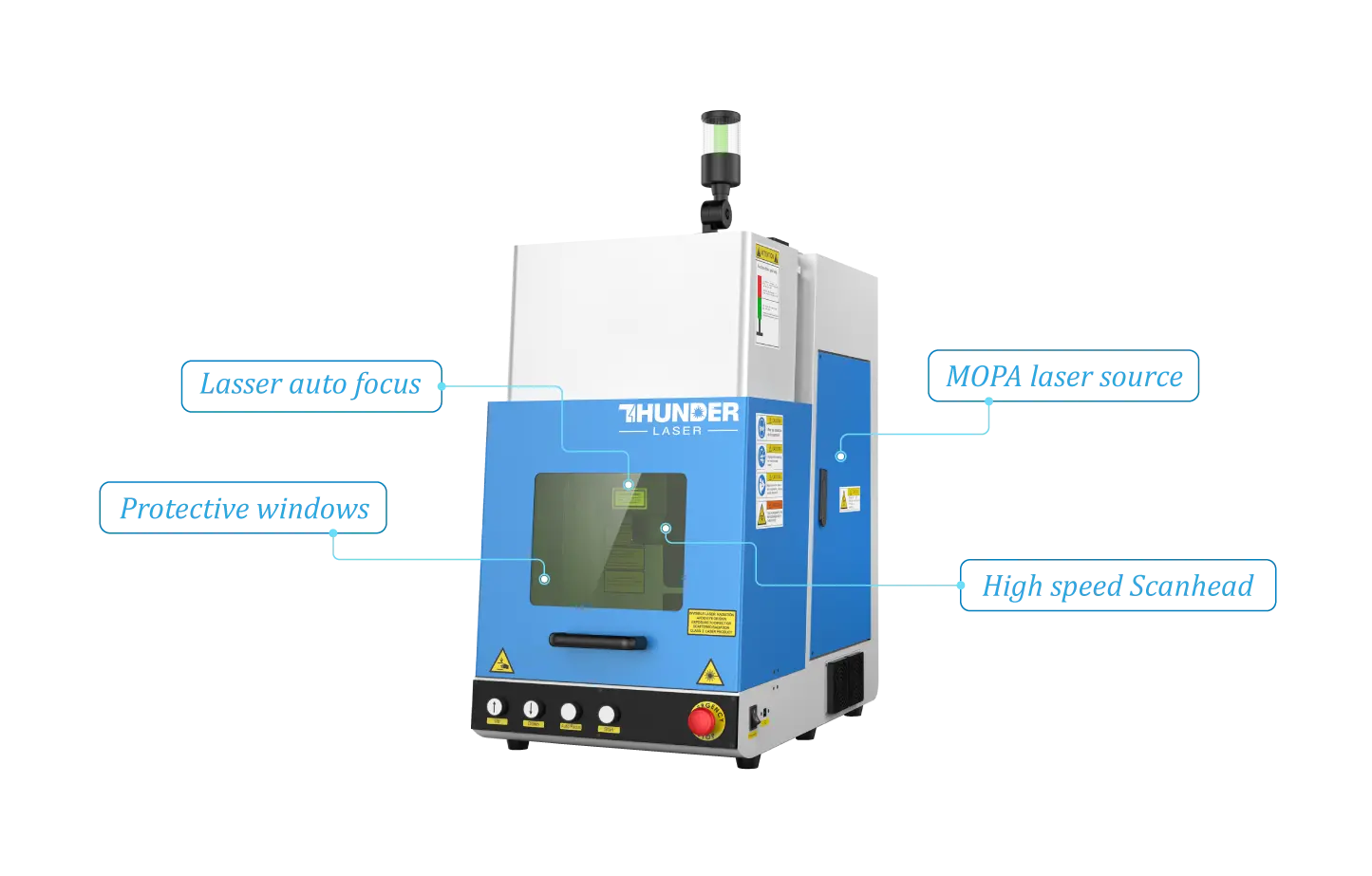
Conclusion
Color laser engraving combines advanced technology with artistic flexibility, making it an indispensable tool for professionals and creatives alike. Whether you’re engraving metals, acrylics, or plastics, this process offers unmatched precision, durability, and aesthetic appeal. By investing in the right color laser engraver and mastering techniques like double color acrylic for laser engraving, you can produce stunning results across various applications.
The versatility and innovation of laser engraving with color ensure that this technology will continue to grow in popularity, reshaping industries and creative fields.
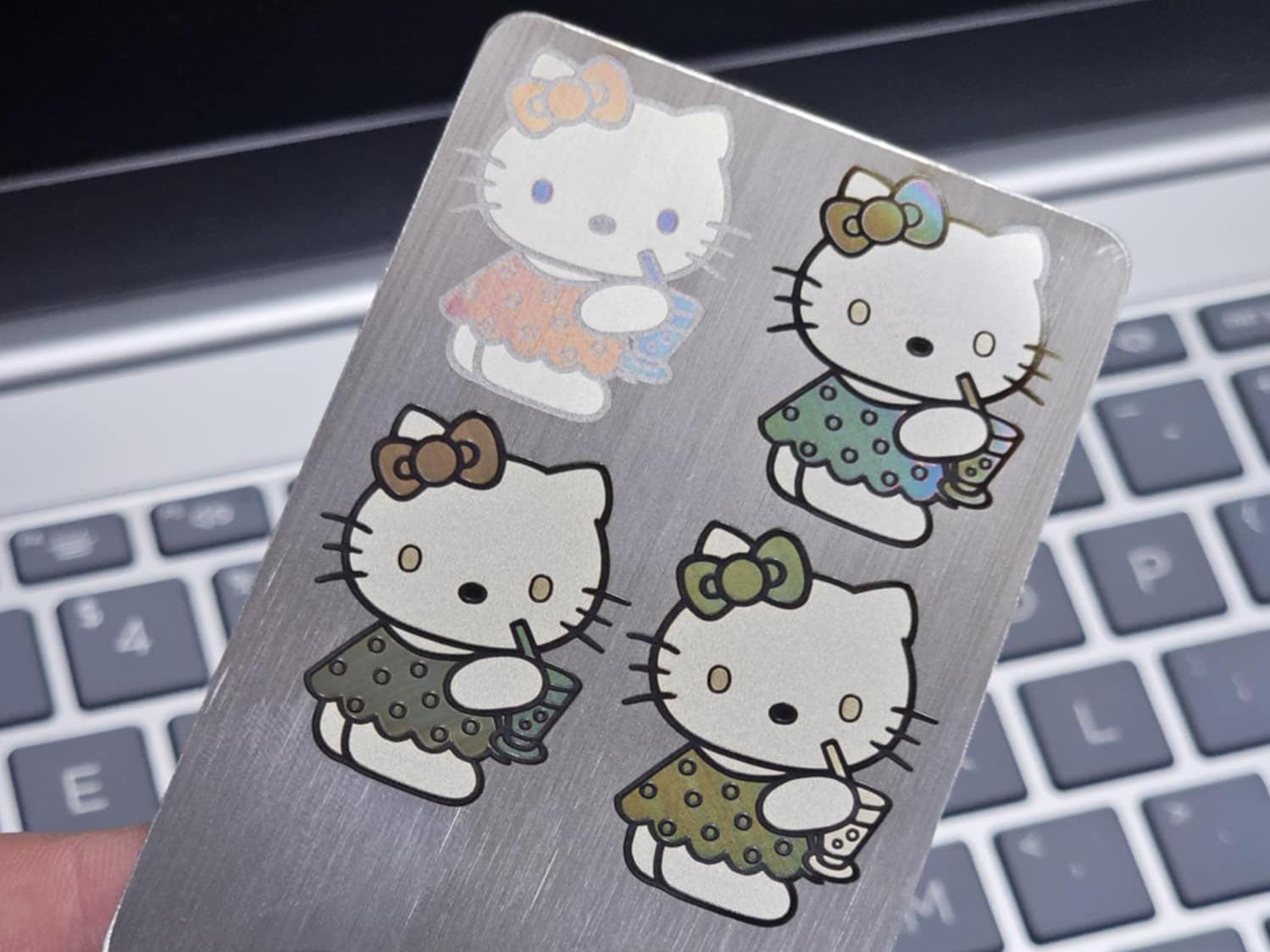
FAQs About Color Laser Engraving
Q1. What materials are ideal for color laser engraving?
Metals like stainless steel and titanium work best for creating vivid colors through oxidation. For contrasting effects, double color acrylic for laser engraving is highly effective. Plastics and glass can also be engraved with UV lasers for vibrant results.
Q2. Can I use CO2 laser for color engraving?
CO2 lasers are best suited for non-metal materials. You can color fill the materials instead of color engraving. For color effects on metals, fiber lasers are recommended.
Learn More about Thunder Laser CO2 Machines
Q3. How durable are color laser engravings?
Color engravings on metals are highly durable since the process alters the material’s surface rather than applying superficial coatings.
Q4. What are the main advantages of a color fiber laser engraver?
A color fiber laser engraver offers high precision, the ability to engrave vibrant colors on metals, and excellent durability, making it ideal for industrial and creative applications.
Q5. How do I start with color laser engraving?
Start by selecting the right laser machine for your material and project. Test on sample materials, configure laser settings appropriately, and practice to master the process.


.png) International
International
 United States
United States
 Brasil
Brasil
 Canada
Canada
 Costa Rica
Costa Rica
 Mexico
Mexico
 Česká
Česká
 Romania
Romania
 Polska
Polska
 Ireland
Ireland
 Portugal
Portugal
 Lietuva
Lietuva
 Россия
Россия Deutschland
Deutschland
 Britain
Britain
 Україна
Україна
 France
France
 Sverige
Sverige
 Italia
Italia
 Norway
Norway
 Denmark
Denmark
 Ελλάδα
Ελλάδα
 한국
한국
 中国
中国
 ประเทศไทย
ประเทศไทย
 中国香港
中国香港
 Israel
Israel
 中國臺灣
中國臺灣
 India
India
 پاکستان
پاکستان
 پශ්රී ලංකා
پශ්රී ලංකා
 ジャパン
ジャパン
 Australia
Australia
 New Zealand
New Zealand
 South Africa
South Africa